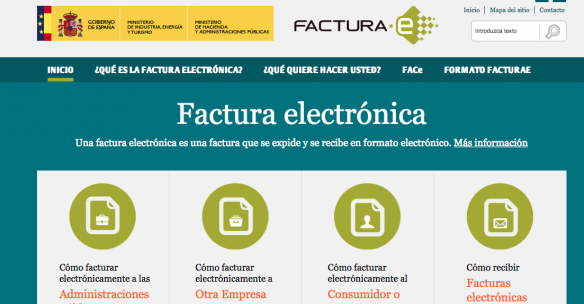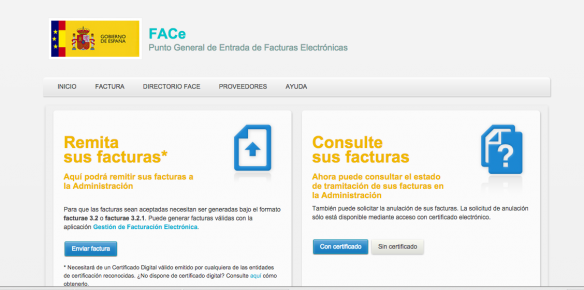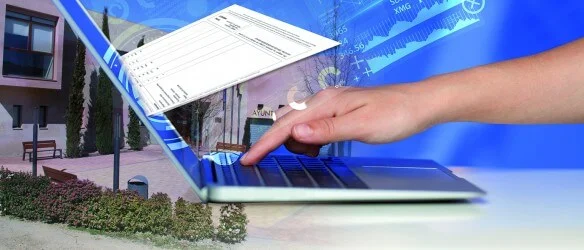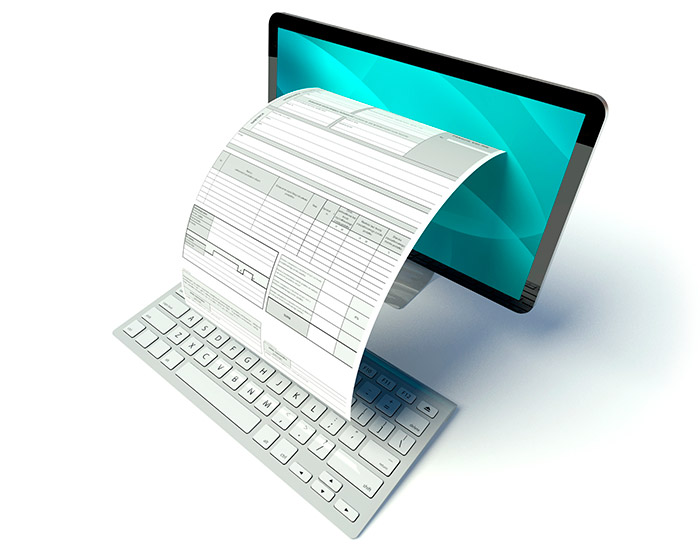It has been a year since the Electronic Invoicing Law came into force in Spain. For many companies working with the Public Administration, it meant a structural change, since invoices had to be submitted telematically through FACe. Have the results been as expected? How is it evolving? How does it fit with the strategies set by Europe? Today from Viafirma we tell you about it.
A Review of the Electronic Invoicing Law

Before commenting on the evolution of electronic invoicing in Spain, for those who are not yet fully aware of what Law 15/2013 consists of, here is a brief review:
- Who is affected? Any businessman who issues invoices to Public Administrations at any level, as well as to large companies.
- What are the requirements?
- Electronically Signed
- In Facturae Format
- Indicating the recipient of the electronic invoice.
Evolution of e-Invoicing implementation in Spain
Promoting telematic management is one of the main objectives of most public administrations. The digital transformation is unstoppable, and both public administrations and companies have made significant progress in matters related to this new reality.
Some of the initiatives must follow the pace and tenor set by both EU and national regulations, as is the case, for example, with the open data strategy or citizens’ electronic access to public services. The progressive implementation of electronic invoicing is no exception.
With regard to the last of these, the evolution has been very positive over the last year. In both the private and public sectors, e-invoicing is achieving an implementation that is meeting milestones and overcoming challenges slowly and not without complications, but unstoppably.
In fact, the determination of deadlines for making electronic invoicing mandatory in our country has a timetable set by different types of regulations that stipulate ambitious objectives, although the reality has been progressing unevenly.
In order to promote electronic communication between different European Union countries, the European Union has decided to promote the generalization of the e-invoice, understood as a digital document that replaces the conventional invoice, in paper format.
Brussels is working towards a single electronic invoicing model, both by creating a regulatory framework full of directives and through innovation and competitiveness programs.
European regulations gave the starting signal to achieve the objective of its implementation by 2020 at the Community level, in particular Council Directive 2010/45/EU of 13 July 2010 – amending Directive 2006/112/EC on the common system of VAT, as regards the rules on invoicing – as well as Directive 2014/55/EU of the European Parliament and of the Council of 16 April 2014 on electronic invoicing in public procurement.
In response to these directives, at the domestic level, Law 25/2013, of December 27, 2013, on the promotion of electronic invoicing and creation of the accounting registry of invoices in the Public Sector, was enacted, as well as Organic Law 6/2015, of June 12, 2015, which partially modifies the former. In addition, we also find a subsequent regulatory development that takes the form of royal decrees, orders and resolutions.
In 2020, in fact, complete substitution is expected, a horizon that is starting to look closer thanks to the evolution experienced since last year. Their positive dynamics have continued to grow, in many cases with exponential increases.
The flexibility of the administrations in facilitating the transition has been largely due to the economic crisis. These difficult circumstances have acted as a brake on meeting the deadlines imposed by the regulations.
In fact, the switch to electronic invoicing in Spain, produced in early 2015, was far from meeting the expectations generated, although currently it can be spoken of a positive evolution.
This point of optimism can be explained, in large part, as a contrast to the problems experienced at the beginning of its obligatory nature. The “paper switch-off” is still a pending issue, but it is also true that the transition to electronic invoicing is progressing at a pace that until recently seemed difficult to achieve.
A slow start

Since January 15, 2015, companies supplying the Administration and certain sectors of activity have been obliged to use electronic invoicing. Until then, invoicing was optional. In fact, since 2003, both in Spain and in the EU as a whole, there has been a legal and fiscal environment suitable for sending and receiving telematic invoices.
It was from Law 25/2013 on the promotion of electronic invoicing and the creation of the accounting registry of invoices in the Public Sector when a turning point was achieved, especially with regard to public administrations.
Even if there are organizations and entities that the law exempts from compliance, the Government states that using the digital invoice for amounts over 5,000 euros can mean a total saving of tens of millions of euros.
Despite a slow and difficult start – even today many public entities do not meet the required technical conditions and FACe, the general point of entry for e-invoicing, is still struggling to optimize its operation – the balance to date can only be positive.
2016: use soars
The figures bear witness to this. Even with marked regional inequalities, the statistics paint a picture of constant progress. According to the latest statistics gathered by FACe, General Entry Point for e-Invoices, pertaining to the first quarter of 2016, the total processed through this body to the different public administrations totaled 7,750,458 invoices submitted, including the autonomous region, the General State Administration (AGE), the Local Administration, universities and other institutions.
The Electronic Administration Observatory, in its latest bulletin of indicators indicates that those processed through FACe in the scope of the AGE was 1,107,475 invoices in March 2016, compared to the 6,010,928 issued during the whole of 2015, and compared to 884 invoices issued in 2014.
Although the Tax Agency links this increase to the extra liquidity that the autonomous regions are receiving through official mechanisms, the progress of this new billing model is undeniable.
In addition to the obvious boost provided by its obligatory nature, the liquidity mechanisms put in place, such as the Autonomous Community Liquidity Fund and the Financial Facility, have accelerated the payment of invoices, especially by the autonomous communities.
The amount of these operations also reached record figures, rising from 32,824 million euros last year to 40,369,769,890 million euros between January and March of this year.
By administrations, local entities accounted for almost half of the electronic receipts (49.6 percent), compared to 38.45 percent for the Autonomous Communities and 9.94 percent for the National Government.
According to a report by the European Electronic Invoice Service Providers Association (EESPA), it is expected to grow at a rate of 10 to 20 percent over the next five years.
In Spain it is no different. According to the latest available data, corresponding to the first half of 2015, the private sector alone issued 77.7 million digital invoices, an increase of 16 percent. In comparative terms, this is more than 10 million more documents than in the same period of the previous year, and in the public sector the evolution is no less positive.
A very beneficial change
Like all changes, this one also takes time. In Spain, the beginning has been plagued by hesitation, but the countdown has begun. Since January 15, 2015, companies supplying the Administration and certain sectors of activity have been obliged to use electronic invoicing.
Despite a slow and difficult start – even today many public entities do not meet the required technical conditions and FACe, the general entry point for e-invoices, is still struggling to optimize its operation – the balance to date can only be positive.
If you are interested in finding out how the Electronic Invoicing law in Spain may affect you, we recommend you to read two articles where we go deeper into the subject:
- The new regulations on the promotion of electronic invoicing and accounting registry of invoices in the public sector in 4 steps
- E-Invoicing, VAT and Tax Agency. What is the SII?
More and more private and public companies are opting for the use of software that allows the issuance of invoices in both formats, since the digital transformation is an undeniable fact in which we are involved. Viafirma eInvoice is our solution to cover this need, allowing the issuance of invoices and sending through FACe with a single click. Viafirma eInvoice complies with the format recommended by the Spanish Ministry of Economy and Finance (facturae v3.2 and v3.2.1).
We will still have to wait a few months to see the results of all the measures that are being taken, however, a very favorable evolution is predicted. And you, what do you think the evolution will be? Share it with us.

